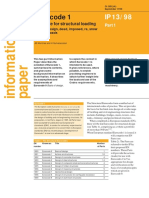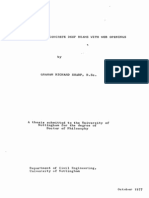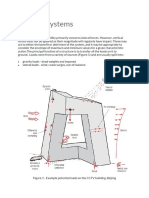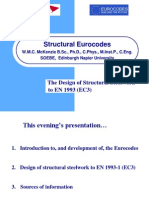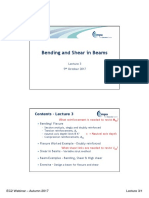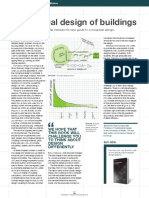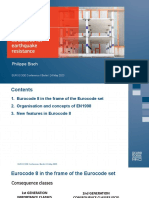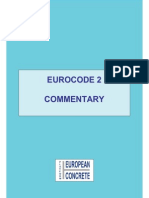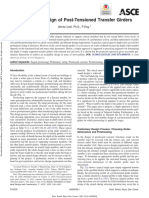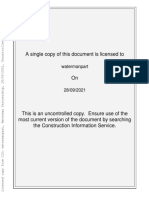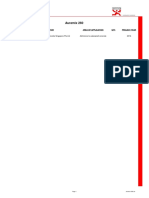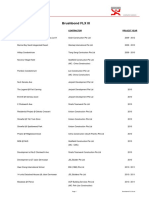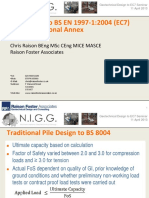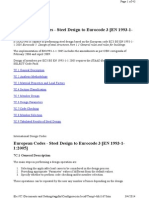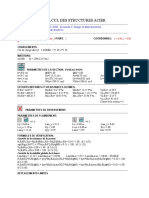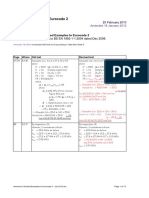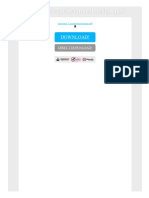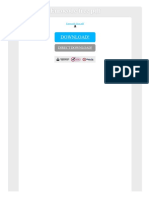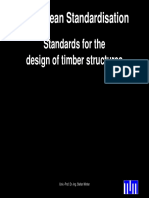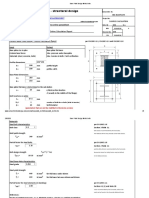How to design concrete structures using Eurocode 2
1. Introduction to Eurocodes
R S Narayanan FREng O Brooker BEng, CEng, MICE, MIStructE
Introduction
The Eurocode family
The introduction of European standards to UK
construction is a significant event. The ten design
standards, known as the Eurocodes, will affect
all design and construction activities as current
British Standards for design are due to be
withdrawn in 2010.
This guide shows how to use Eurocode 21 with the other Eurocodes. In
particular it introduces Eurocode: Basis of structural design2 and Eurocode 1:
Actions on structures3 and guides the designer through the process of
determining the design values for actions on a structure. It also gives a brief
overview of the significant differences between the Eurocodes and BS 81104,
(which will be superseded) and includes a glossary of Eurocode terminology.
This publication is part of the series of guides
entitled How to design concrete structures using
Eurocode 2. Their aim is to make the transition to
Eurocode 2: Design of concrete structures as easy
as possible by drawing together in one place key
information and commentary required for the
design of typical concrete elements.
The development of the Eurocodes started in 1975; since then they have
evolved significantly and are now claimed to be the most technically
advanced structural codes in the world. The many benefits of using Eurocode 2
are summarised below. There are ten Eurocodes covering all the main structural
materials (see Figure 1). They are produced by the European Committee for
Standardization (CEN), and will replace existing national standards in 28
countries.
The cement and concrete industry recognised that
a substantial effort was required to ensure that
the UK design profession would be able to use
Eurocode 2 quickly, effectively, efficiently and with
confidence. With support from government,
consultants and relevant industry bodies, the
Concrete Industry Eurocode 2 Group (CIEG) was
formed in 1999 and this Group has provided the
guidance for a co-ordinated and collaborative
approach to the introduction of Eurocode 2. As
a result, a range of resources is to be made
available through The Concrete Centre to help
designers during the transition period (see back
cover for details).
Each country is required to publish a Eurocode with a national title page and
forward but the original text of the Eurocode must appear as produced by
CEN as the main body of the document. A National Annex (NA) can be
included at the back of the document (see Figure 2). All the guides in this
series assume that the UK National Annexes will be used.
This guide is taken
from The Concrete
Centres publication,
How to design
concrete structures
using Eurocode 2
(Ref. CCIP006)
Table 1 details which existing standards relating to concrete design will be
replaced by the new Eurocodes. During the implementation period it is
recommended that existing standards are considered for use where the
European standards have not yet been issued.
Benefits of using Eurocode 2
Learning to use the new Eurocodes will require time and effort on
behalf of the designer, so what benefits will there be?
1. The new Eurocodes are claimed to be the most technically
advanced codes in the world.
2. Eurocode 2 should result in more economic structures than
BS 8110.
3. The Eurocodes are logical and organised to avoid repetition.
4. Eurocode 2 is less restrictive than existing codes.
5. Eurocode 2 is more extensive than existing codes.
6. Use of the Eurocodes will provide more opportunity for designers
to work throughout Europe.
7. In Europe all public works must allow the Eurocodes to be used.
�How to design concrete structures using Eurocode 2
Figure 1
The Eurocodes
BS EN 1990, Eurocode:
Basis of structural design
Structural safety,
serviceability and durability
BS EN 1991, Eurocode 1:
Actions on structures
Actions on structures
BS EN 1992, Eurocode 2: Concrete
BS EN 1993, Eurocode 3: Steel
BS EN 1994, Eurocode 4: Composite
BS EN 1995, Eurocode 5: Timber
BS EN 1996, Eurocode 6: Masonry
BS EN 1999, Eurocode 9: Aluminium
BS EN 1997, Eurocode 7:
Geotechnical design
This Eurocode underpins all structural design irrespective of the
material of construction. It establishes principles and requirements for
safety, serviceability and durability of structures. (Note, the correct title
is Eurocode not Eurocode 0.) The Eurocode uses a statistical approach
to determine realistic values for actions that occur in combination with
each other.
Design and detailing
Geotechnical
and seismic
design
BS EN 1998, Eurocode 8:
Seismic design
Eurocode: Basis of
structural design
Figure 2
Typical Eurocode layout
There is no equivalent British Standard for Eurocode: Basis of structural
design and the corresponding information has traditionally been
replicated in each of the material Eurocodes. It also introduces new
definitions (see Glossary) and symbols (see Tables 2a and 2b), which
will be used throughout this publication to assist familiarity. Partial
factors for actions are given in this Eurocode, whilst partial factors for
materials are prescribed in their relevant Eurocode.
Representative values
A: National title page
B: National Foreword
C: CEN title page
D: Main text
E: Main Annex(es)
F: National Annex
Table 1
For each variable action there are four representative values. The
principal representative value is the characteristic value and this can be
determined statistically or, where there is insufficient data, a nominal
value may be used. The other representative values are combination,
frequent and quasi-permanent; these are obtained by applying to the
characteristic value the factors c 0 , c 1 and c 2 respectively (see Figure 3).
A semi-probabilistic method is used to derive the c factors, which vary
depending on the type of imposed load (see Table 3). Further information
on derivation of the c factors can be found in Appendix C of the Eurocode.
Concrete related Eurocodes and their equivalent current standards
Eurocode
Title
Superseded standards
BS EN 1990
Basis of structural design
BS 8110: Part 1 section 2
BS EN 199111
Densities, self-weight and
imposed loads
BS 6399: Part 1 and BS 648
BS EN 199112
Actions on structures
exposed to fire
BS EN 199113
Snow loads
BS 6399: Part 2
BS EN 199114
Wind actions
BS 6399: Part 3
BS EN 199115
Thermal actions
BS EN 199116
Actions during execution
BS EN 199117
Accidental actions
BS EN 19912
Traffic loads on bridges
BD 37/88
BS EN 19913
Actions induced by cranes
and machinery
BS EN 19914
Silos and tanks
BS EN 199211
General rules for buildings
BS 8110: Parts 1, 2 and 3
BS EN 199212
Fire resistance of concrete
structures
BS 8110: Part 1,Table 3.2 and
BS 8110: Part 2, section 4
BS EN 19922
Bridges
BS 5400: Part 4
BS EN 19923
Liquid-retaining and
containment structures
BS 8007
BS EN 19971
Geotechnical design
General rules
BS 6031, BS 8002, BS 8004,
BS 8006, BS 8008 & BS 8081
BS EN 19972
Geotechnical design Ground BS 5930
investigation and testing
BS EN 1998
Design of structures for
earthquake resistance (6 parts)
The combination value (c 0 Qk) of an action is intended to take
account of the reduced probability of the simultaneous occurrence of
two or more variable actions. The frequent value ( c 1 Qk) is such that it
should be exceeded only for a short period of time and is used
primarily for the serviceability limit states (SLS) and also the accidental
ultimate limit state (ULS). The quasi-permanent value ( c 2 Qk) may be
exceeded for a considerable period of time; alternatively it may be
considered as an average loading over time. It is used for the long-term
affects at the SLS and also accidental and seismic ULS.
Combinations of actions
In the Eurocodes the term combination of actions is specifically used
for the definition of the magnitude of actions to be used when a limit
state is under the influence of different actions. It should not be
confused with load cases, which are concerned with the arrangement
of the variable actions to give the most unfavourable conditions and
are given in the material Eurocodes. The following process can be used
to determine the value of actions used for analysis:
1. Identify the design situation (e.g. persistent, transient, accidental).
2. Identify all realistic actions.
3. Determine the partial factors (see below) for each applicable
combination of actions.
4. Arrange the actions to produce the most critical conditions.
�1. Introduction to Eurocodes
Where there is only one variable action (e.g. imposed load) in a
combination, the magnitude of the actions can be obtained by
multiplying them by the appropriate partial factors.
Where there is more than one variable action in a combination, it is
necessary to identify the leading action (Qk,1) and other accompanying
actions (Qk,i). The accompanying action is always taken as the
combination value.
Ultimate limit state
The ultimate limit states are divided into the following categories:
EQU Loss of equilibrium of the structure.
STR Internal failure or excessive deformation of the structure
or structural member.
GEO Failure due to excessive deformation of the ground.
FAT Fatigue failure of the structure or structural members.
The Eurocode gives different combinations for each of these ultimate
limit states. For the purpose of this publication only the STR ultimate
limit state will be considered.
For persistent and transient design situations under the STR limit
state, the Eurocode defines three possible combinations, which are given
in Expressions (6.10), (6.10a) and (6.10b) of the Eurocode (see Tables 4
and 5). The designer (for UK buildings) may use either (6.10) or the less
favourable of (6.10a) and (6.10b).
Table 2a
Selected symbols for Eurocode
Symbol
Gk
Definition
Characteristic value of permanent action
Qk
gG
Characteristic value of single variable action
gQ
Partial factor for variable action
c0
Factor for combination value of a variable action
c1
Factor for frequent value of a variable action
Partial factor for permanent action
c2
Factor for quasi-permanent value of a variable action
Combination factor for permanent actions
Table 2b
Selected subscripts
Subscript
Definition
Accidental situation
Concrete
Design
Effect of action
fi
Fire
Characteristic
Resistance
Shear reinforcement
Yield strength
Figure 3
Representative values of variable actions 5
At first sight it appears that there is considerably more calculation
required to determine the appropriate load combination; however, with
experience the designer will be able to determine this by inspection.
Expression (6.10) is always equal to or more conservative than the less
favourable of Expressions (6.10a) and (6.10b). Expression (6.10b) will
normally apply when the permanent actions are not greater than 4.5
times the variable actions (except for storage loads (category E, Table 3)
where Expression (6.10a) always applies).
Instantaneous value of Q
Characteristic value of QK
Combination value of c0 QK
Frequent value of c1 QK
Quasipermanent
value of c2 QK
Time
Therefore, for a typical concrete frame building, Expression (6.10b) will
give the most structurally economical combination of actions.
Table 3
Recommended values of c factors for buildings (from UK National Annex)
c0
c1
c2
Category A: domestic, residential areas
0.7
0.5
0.3
Category B: office areas
0.7
0.5
0.3
Category C: congregation areas
0.7
0.7
0.6
Category D: shopping areas
0.7
0.7
0.6
Action
For members supporting one variable action the combination
1.25 Gk + 1.5 Qk (derived from Exp 6.10b)
can be used provided the permanent actions are not greater
than 4.5 times the variable actions (except for storage loads).
Serviceability limit state
There are three combinations of actions that can be used to check the
serviceability limit states (see Tables 6 and 7). Eurocode 2 indicates
which combination should be used for which phenomenon (e.g.
deflection is checked using the quasi-permanent combination). Care
should be taken not to confuse the SLS combinations of characteristic,
frequent and quasi-permanent, with the representative values that
have the same titles.
Imposed loads in buildings (see BS EN 199111)
Category E: storage areas
1.0
0.9
0.8
Category F: traffic area, vehicle weight < 30 kN
0.7
0.7
0.6
Category G: traffic area, 30 kN < vehicle weight < 160 kN 0.7
0.5
0.3
Category H: roofs*
0.7
Snow loads on buildings (see BS EN 19913)
For sites located at altitude H > 1000 m above sea level
0.7
0.5
0.2
For sites located at altitude H < 1000 m above sea level 0.5
Wind loads on buildings (see BS EN 199114)
0.5
0.2
0.2
0
0
Temperature (non-fire) in buildings (see BS EN 199115) 0.6
0.5
Key
*See also 199111: Clause 3.3.2
�How to design concrete structures using Eurocode 2
Table 4
Design values of actions, ultimate limit state persistent and transient design situations (Table A1.2 (B) Eurocode)
Combination Expression reference
Permanent actions
Leading variable action
Unfavourable
Favourable
Exp. (6.10)
g G, j, sup Gk , j , sup
g G , j, inf G k , j , inf
Exp. (6.10a)
g G, j, sup Gk , j , sup
g G , j, inf G k , j , inf
Exp. (6.10b)
jg G, j, sup Gk , j , sup
g G , j, inf G k , j , inf
Accompanying variable actions
Main (if any)
g Q,1 Qk,1
Others
g Q,1 c 0 ,1 Q k,i
g Q,1 c 0 ,1 Qk,1
g Q,1 Qk,1
g Q,1 c 0 ,1 Q k,i
g Q,1 c 0 ,1 Q k,i
Note
1 Design for either Expression (6.10) or the less favourable of Expressions (6.10a) and (6.10b).
Table 5
Design values of actions, derived for UK design, ultimate limit state persistent and transient design situations
Combination Expression reference
Permanent actions
Unfavourable
Leading variable action
Favourable
Accompanying variable actions
Main (if any)
Others
Combination of permanent and variable actions
Exp. (6.10)
1.35 Gk a
1.0 Gk a
Exp. (6.10a)
1.35 Gk
1.0 Gk
Exp. (6.10b)
0.925 d x 1.35 Gk a
1.5 Qk
1.5 c 0,1b Qk
1.0 Gk a
1.5 Qk
Combination of permanent, variable and accompanying variable actions
Exp. (6.10)
1.35 Gk a
1.0 Gk a
Exp. (6.10a)
1.35 Gk
1.0 Gk
Exp. (6.10b)
0.925 d x 1.35 Gk a
1.5 c c 0,i b Q k,i
1.5 Qk,1
1.5 c 0,1 Qk
b
1.0 Gk a
1.5 c c 0,i b Q k,i
1.5 c c 0,i b Q k,i
1.5 Qk,1
Key
a Where the variation in permanent action is not considered significant, Gk,j,sup and Gk,j,inf may be taken as Gk
c Where the accompanying load is favourable, g Q,i = 0
b The value of c 0 can be obtained from Table NA A1.1 of the UK National Annex (reproduced here as Table 3)
d The value of j in the UK National Annex is 0.925
Table 6
Design values of actions, serviceability limit states
Combination
Permanent actions
Variable actions
Example of use in Eurocode 2
Unfavourable
Favourable
Leading
Others
Characteristic
Gk,j,sup
Gk,j,inf
Qk,1
c 0 , i Qk,i
Frequent
Gk,j,sup
Gk,j,inf
c 1,1 Qk,1
c 2 , i Qk,i
Cracking prestressed concrete
Quasi-permanent
Gk,j,sup
Gk,j,inf
c 2,1 Qk,1
c 2 , i Qk,i
Deflection
Notes
1 Where the variation in permanent action is not considered significant. Gk,j,sup and Gk,j,inf may be taken as Gk
2 For values of c 0, c 1 and c 2 refer to Table 3
Table 7
Example design combinations for deflection (quasi-permanent) derived for typical UK reinforced concrete design
Combination
Permanent actions
Variable action
Unfavourable
Leading
Office
Gk
0.3 b Q k,1
Shopping area
Gk a
0.6b Q k,1
Storage
Gk a
0.8b Q k,1
Key
a Where the variation in permanent action is not considered significant Gk,j,sup and Gk,j,inf may be taken as Gk
b Values of c 2 are taken from UK NA (see Table 3)
�1. Introduction to Eurocodes
Eurocode 1
Eurocode 1 supersedes BS 6399: Loading for buildings6 and BS 648:
Schedule of weights of building materials7. It contains within its ten parts
(see Table 8) all the information required by the designer to assess the
individual actions on a structure. It is generally self-explanatory and it
is anticipated the actions to be used in the UK (as advised in the UK
National Annex) will typically be the same as those in the current
British Standards. The most notable exception is the bulk density of
reinforced concrete, which has been increased to 25 kN/m3. Currently
not all the parts of Eurocode 1 and their National Annexes are
available, in which case it is advised that the loads recommended in
the current British Standards are used.
Eurocode 2
Table 8
Eurocode 1, its parts and dates of publication
Reference
Title
Publication date
Eurocode
National Annex
BS EN 199111
Densities,
self-weight and
imposed loads
April
2004
Due
November
2005 a
BS EN 199112
Actions on
structures
exposed to fire
November
2004
Due
January
2006a
BS EN 199113
Snow loads
July
2003
Due
November
2005a
BS EN 199114
Wind actions
April
2005
Due
January
2006a
BS EN 199115
Thermal actions
March
2003
TBA
BS EN 199116
Actions during
execution
July
2005
TBA
BS EN 199117
Accidental actions
due to impact
and explosions
Due
March
2006 a
TBA
There are four parts to Eurocode 2; Figure 4 indicates how they fit into
the Eurocode system, which includes other European standards.
BS EN 19912
Traffic loads
on bridges
October
2003
Part 11
Due
September
2006a
BS EN 19913
Actions induced
by cranes
and machinery
Due
November
2006 a
TBA
BS EN 19914
Actions in silos
and tanks
Due
March
2006a
TBA
Eurocode 2, Part 11: General rules and rules for buildings9 is the
principal part which is referenced by the three other parts. For the UK
designer there are a number of differences between Eurocode 2 and
BS 8110, which will initially make the new Eurocode seem unfamiliar.
The key differences are listed below to assist in the familiarisation process.
1. Eurocode 2 is generally laid out to give advice on the basis of
phenomena (e.g. bending, shear etc) rather than by member
types as in BS 8110 (e.g. beams, slabs, columns etc).
2. Design is based on characteristic cylinder strengths not cube
strengths.
3. The Eurocode does not provide derived formulae (e.g. for bending,
only the details of the stress block are expressed). This is the
traditional European approach, where the application of a Eurocode
is expected to be provided in a textbook or similar publication.
The Eurocodes allow for this type of detail to be provided in
Non-contradictory complementary information (NCCI) (See
Glossary).
4. Units for stress are mega pascals, MPa (1 MPa = 1 N/mm2).
5. Eurocode 2 uses a comma for a decimal point. It is expected that
UK designers will continue to use a decimal point. Therefore to
avoid confusion, the comma should not be used for separating
multiples of a thousand.
6. One thousandth is represented by .
7. The partial factor for steel reinforcement is 1.15. However, the
characteristic yield strength of steel that meets the requirements
of BS 4449 will be 500 MPa; so overall the effect is negligible.
8. Eurocode 2 is applicable for ribbed reinforcement with characteristic
yield strengths of 400 to 600 MPa. There is no guidance on plain
bar or mild steel reinforcement in the Eurocode, but guidance is
given in the background paper to the UK National Annex10.
9. The effects of geometric imperfection (notional horizontal loads)
are considered in addition to lateral loads.
Key
a Planned publication date (correct at time of publication) Source: BSI8
Figure 4
Relationship between Eurocode 2 and other Eurocodes
BS EN 1997
EUROCODE 7
Geotechnical
design
BS EN 1990
EUROCODE
Basis of structural
design
BS EN 1998
EUROCODE 8
Seismic
design
BS EN 206
Specifying
concrete
BS EN 1991
EUROCODE 1
Actions on
structures
BS EN 10080
Reinforcing
steels
BS 8500
Specifying
concrete
BS EN 1992
EUROCODE 2
Design of concrete
structures
BS 4449
Reinforcing
steels
Part 11: General
rules for structures
BS EN 13670
Execution of
structures
Part 12: Structural
fire design
BS EN 13369
Precast
concrete
BS EN 1992
EUROCODE 2
Part 2:
Bridges
BS EN 1992 Part 3:
EUROCODE 2
Liquid-retaining
structures
Precast concrete
product
standards
�How to design concrete structures using Eurocode 2
10. Minimum concrete cover is related to bond strength, durability
and fire resistance. In addition to the minimum cover an
allowance for deviations due to variations in execution
(construction) should be included. Eurocode 2 recommends
that, for concrete cast against formwork, this is taken as 10 mm,
unless the construction is subject to a quality assurance system
in which case it could be reduced to 5 mm or even 0 mm where
non-conforming members are rejected (e.g. in a precast yard).
It is recommended that the nominal cover is stated on the
drawings and construction tolerances are given in the
specification.
11. Higher strengths of concrete are covered by Eurocode 2, up to
class C90/105. However, because the characteristics of higher
strength concrete are different, some Expressions in the Eurocode
are adjusted for classes above C50/60.
12. The variable strut inclination method is used in Eurocode 2 for
the assessment of the shear capacity of a section. In practice,
design values for actual structures can be compared with
tabulated values. Further advice can be found in the guide How
to design concrete structures using Eurocode 2: Beams11.
13. The punching shear checks are carried at 2d from the face of the
column and for a rectangular column, the perimeter is rounded at
the corners.
14. Serviceability checks can still be carried out using deemed to
satisfy span to effective depth rules similar to BS 8110. However,
if a more detailed check is required, Eurocode 2 guidance varies
from the rules in BS 8110 Part 2.
15. The rules for determining the anchorage and lap lengths are more
complex than the simple tables in BS 8110. Eurocode 2 considers
the effects of, amongst other things, the position of bars during
concreting, the shape of the bar and cover.
Eurocode 7
Eurocode 7: Geotechnical design17 is in two parts and gives guidance on
geotechnical design, ground investigation and testing. It has a broad
scope and includes the geotechnical design of spread foundations, piled
foundations, retaining walls, deep basements and embankments. Like
all the Eurocodes it is based on limit state design principles, which is
a significant variation for most geotechnical design. Further guidance
related to simple foundations is given in the guide How to design
concrete structures using Eurocode 2: Foundations18.
Eurocode 8
Eurocode 8: Design of structures for earthquake resistance19 is divided into
six parts and gives guidance on all aspects of design for earthquake
resistance and covers guidance for the various structural materials for
all types of structures. It also includes guidance for strengthening and
repair of buildings. In areas of low seismicity it is anticipated that detailing
structures to Eurocode 2 will ensure compliance with Eurocode 8.
Related Standards
BS 8500/BS EN 206
BS 8500: Concrete Complementary British Standard to BS EN 206120
replaced BS 5328 in December 2003 and designers should currently
be using this to specify concrete. Further guidance can found in the
publication How to use BS 8500 with BS 811021 available from The
Concrete Centre.
BS 4449/BS EN 10080
Part 12
Eurocode 2, Part 12: Structural fire design12, gives guidance on design for
fire resistance of concrete structures. Although much of the Eurocode
is devoted to fire engineering methods, the design for fire resistance
may still be carried out by referring to tables for minimum cover and
dimensions for various elements. These are given in section 5 of Part
12. Further advice on using the tabular method is given in the guide
How to design concrete structures using Eurocode 2: Getting started 13.
BS 4449: Specification for carbon steel bars for the reinforcement of
concrete22 has been revised ready for implementation in January 2006.
It is a complementary standard to BS EN 10080 Steel for the
reinforcement of concrete23 and Normative Annex C of Eurocode 2. The
most significant changes are that steel characteristic yield will change
to 500 MPa. There are three classes of reinforcement, A, B and C, which
indicate increasing ductility. Class A is not suitable for use where
redistribution of 20% and above has been assumed in the design.
Part 2
BS EN 13670
Eurocode 2, Part 2: Bridges14 applies the general rules given in Part 11
to the design of concrete bridges. As a consequence both Part 11 and
Part 2 will be required to carry out a design of a reinforced concrete
bridge.
BS 8110 Part 1 sections 6 and 7 specify the workmanship for concrete
construction. There is no equivalent guidance in Eurocode 2, and it is
intended that execution (construction) will be covered in a new
standard BS EN 13670 Execution of concrete structures24. This is still in
preparation and is not expected to be ready for publication until 2008
at the earliest. In the intervening period the draft background paper to
the UK National Annex of Eurocode 2, Part 1-110 recommends that
designers use the National structural concrete specification for building
construction25, which refers to BS 8110 for workmanship.
Part 3
Eurocode 2, Part 3: Liquid-retaining and containment structures15 applies
the general rules given in Part 11 to the liquid-retaining structures
and supersedes BS 800716.
�1. Introduction to Eurocodes
Glossary of Eurocode terminology
Term
Definition
Principles
Clauses that are general statements, definitions, requirements and analytical models for which no
alternative is permitted. They are identified by (P) after the clause number.
Application Rules
These are generally recognised rules, which comply with the principles and satisfy their requirements.
Nationally Determined Parameter (NDP)
Eurocodes may be used to satisfy national Building Regulations, which themselves will not be
harmonized. NDPs are therefore used to allow a country to set its own levels of safety. NDPs also allow
certain other parameters (generally influenced by climate, geography and geology) to be left open for
selection nationally: NDPs are advised in the National Annex.
National Annex (NA)
A National Annex accompanies each Eurocode and it contains a) the values of NDPs b) the national
decision regarding the use of Informative Annexes and c) references to NCCIs
Normative
The term used for the text of Standards that forms the core requirements. Compliance with Eurocodes
will generally be judged against the normative requirements.
Informative
A term used only in relation to annexes, which seek to inform rather than require.
NCCI
Non-contradictory complementary information. References in a National Annex which contains further
information or guidance which does not contradict the Eurocode.
Characteristic value
A value that may be derived statistically with a probability of not being exceeded during a reference
period. The value corresponds to a specified fractile for a particular property of material or product. The
characteristic values are denoted by subscript k (e.g. Qk etc). It is the principal representative value
from which other representative values may be derived.
Representative value
Value used for verification of a limit state. It may be the characteristic value or an accompanying value,
e.g. combination, frequent or quasi-permanent.
Design values
These refer to representative values modified by partial factors. They are denoted by subscript d
(e.g. f cd = f ck /g c ; Q d = g Q Q k).
Action (F)
Set of forces, deformations or accelerations acting on the structure.
Combination of actions
Set of design values used for the verification of the structural reliability for a limit state under the
simultaneous influence of different and statistically independent actions.
Fixed action
Action that has a fixed distribution and position over the structure or structural member.
Free action
Action that may have various spatial distributions over the structure.
Permanent actions (G)
Actions that are likely to act throughout the life of the structure and whose variation in magnitude
with time is negligible (e.g. permanent loads).
Variable actions (Q)
Actions whose magnitude will vary with time (e.g. wind loads).
Effect of action (E)
Deformation or internal force caused by an action.
Accidental action (A)
Action, usually of short duration but of significant magnitude, that is unlikely to occur on a given
structure during the design working life.
Accompanying action
An action in a combination that is not the leading variable action.
Transient design situation
Design situation that is relevant during a period much shorter than the design working life of the structure.
Persistent design situation
Design situation that is relevant during a period of the same order as the design working life of the structure.
Accidental design situation
Design situation involving exceptional conditions of the structure.
Irreversible serviceability limit state
Serviceability limit state where some consequences of actions will remain when the actions are removed.
Reversible serviceability limit state
Serviceability limit state where no consequences of actions will remain when the actions are removed.
Execution
Construction of the works.
�How to design concrete structures using Eurocode 2
1. Introduction to Eurocodes
References
1 BRITISH STANDARDS INSTITUTION. BS EN 1992, Eurocode 2: Design of concrete structures. BSI (4 parts).
2 BRITISH STANDARDS INSTITUTION. BS EN 1990, Eurocode: Basis of structural design. BSI, 2002.
3 BRITISH STANDARDS INSTITUTION. BS EN 1991, Eurocode 1: Actions on structures. BSI (10 parts).
4 BRITISH STANDARDS INSTITUTION. BS 8110: The structural use of concrete. BSI (3 parts).
M T. Designers guide to EN 1990. Thomas Telford, 2002.
5 GULVANESSIAN, H, CALGARO, J A & HOLICY,
6 BRITISH STANDARDS INSTITUTION. BS 6399: Loading for buildings. BSI (3 parts).
7 BRITISH STANDARDS INSTITUTION. BS 648: Schedule of weights of building materials. BSI, 1964.
8 BRITISH STANDARDS INSTITUTION. Web page: www.bsi-global.com/Eurocodes/Progress/index.xalter. BSI.
9 BRITISH STANDARDS INSTITUTION. BS EN 199211, Eurocode 2: Design of concrete structures. General rules and rules for buildings. BSI, 2004.
10 BRITISH STANDARD INSTITUTION. PD 6687. Background paper to the UK National Annex to BS EN 199211. BSI, due 2005.
11 MOSS, R M & BROOKER, O. How to design concrete structures using Eurocode 2: Beams (TCC/03/19). The Concrete Centre, due 2006.
12 BRITISH STANDARDS INSTITUTION. BS EN 199212, Eurocode 2: Design of concrete structures. Structural fire design. BSI, 2004.
13 BROOKER, O. How to design concrete structures using Eurocode 2: Getting started (TCC/03/17). The Concrete Centre, due 2005.
14 BRITISH STANDARDS INSTITUTION. BS EN 19922, Eurocode 2: Design of concrete structures. Bridges. BSI, 2005.
15 BRITISH STANDARDS INSTITUTION. BS EN 19923, Eurocode 2: Design of concrete structures. Liquid-retaining and containment structures.
BSI, due 2006.
16 BRITISH STANDARDS INSTITUTION. BS 8007: Code of practice for design of concrete structures for retaining aqueous liquids. BSI, 1987.
17 BRITISH STANDARDS INSTITUTION. BS EN 1997, Eurocode 7: Geotechnical design. BSI (2 parts).
18 WEBSTER, R & BROOKER, O. How to design concrete structures using Eurocode 2: Foundations (TCC/03/21). The Concrete Centre, due 2006.
19 BRITISH STANDARDS INSTITUTION. BS EN 1998, Eurocode 8: Design of structures for earthquake resistance. BSI (6 parts).
20 BRITISH STANDARDS INSTITUTION. BS 8500: Concrete Complementary British Standard to BS EN 2061, 2002 (2 parts).
21 HARRISON, T A & BROOKER, O. How to use BS 8500 with BS 8110 (TCC/03/11). The Concrete Centre, 2005.
22 BRITISH STANDARDS INSTITUTION. BS 4449: Specification for carbon steel bars for the reinforcement of concrete. BSI, 2005.
23 BRITISH STANDARDS INSTITUTION. BS EN 10080: Steel for the reinforcement of concrete Weldable reinforcing steel General. BSI, due 2005.
24 BRITISH STANDARDS INSTITUTION. EN 13670: Execution of concrete structures Part 1: Common. BSI, due 2008.
25 THE CONCRETE SOCIETY. CS 152: National structural concrete specification for building construction, third edition. The Society, 2004.
Further guidance and advice
Guides in this series cover: Introduction to Eurocodes, Getting started, Slabs, Beams, Columns, Foundations, Flat slabs and Deflection. For free
downloads, details of other publications and more information on Eurocode 2 visit www.eurocode2.info
For information on all the new Eurocodes visit www.eurocodes.co.uk
Acknowledgements
The content of this publication was produced as part of the project Eurocode 2: transition from UK to European concrete design standards. This
project was part funded by the DTI under the Partners in Innovation scheme. The lead partner was the British Cement Association. The work was
carried out under the guidance of the Concrete Industry Eurocode 2 Group, which consists of representatives from:
Alan Baxter and Associates Arup British Cement Association British Precast Building Research Establishment Clark Smith Partnership
Concrete Innovation and Design Construct Department for Trade and Industry Office of the Deputy Prime Minister The Concrete Centre
The Concrete Society Quarry Products Association
For more information on Eurocode 2 and
other questions relating to the design, use
and performance of concrete contact the
free National Helpline on:
Published by The Concrete Centre
Riverside House, 4 Meadows Business Park,
Station Approach, Blackwater, Camberley,
Surrey GU17 9AB
0700 4 500 500 or 0700 4 CONCRETE
Tel: +44 (0)1276 606800
helpline@concretecentre.com
Fax: +44 (0)1276 606801
www.concretecentre.com
Ref: TCC/03/16
ISBN 1-904818-26-9
Published November 2005
The Concrete Centre
All advice or information from The Concrete Centre is intended for those who will evaluate the significance and limitations of its contents
and take responsibility for its use and application. No liability (including that for negligence) for any loss resulting from such advice or
information is accepted by The Concrete Centre or its subcontractors, suppliers or advisors. Readers should note that publications from
The Concrete Centre are subject to revision from time to time and they should therefore ensure that they are in possession of the
latest version. This publication has been produced following a contract placed by the Department for Trade and Industry (DTI); the
views expressed are not necessarily those of the DTI.





